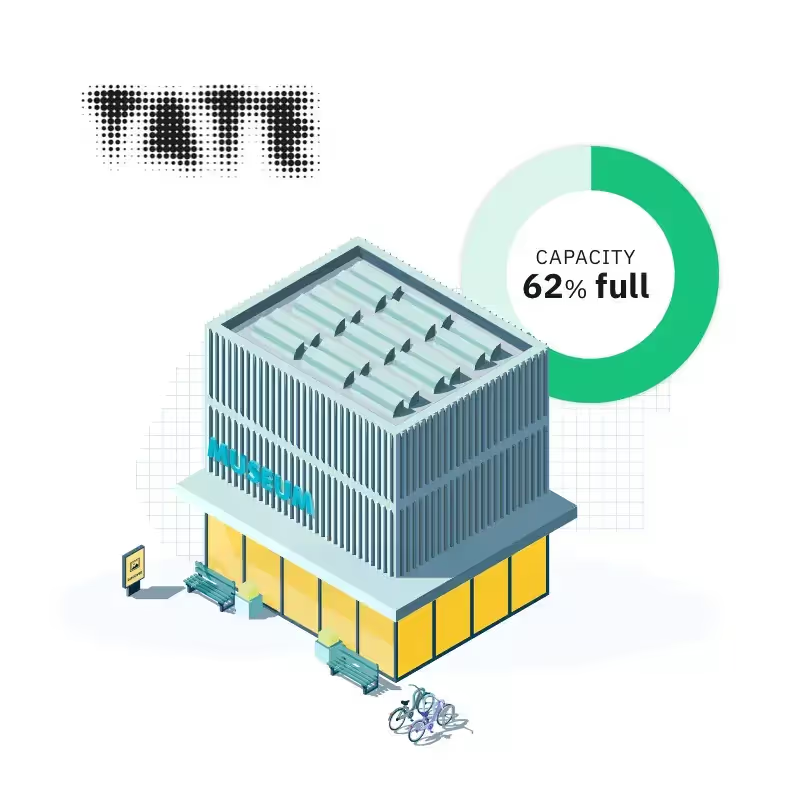Tate Modern is one of the most visited museums and galleries in the world. Since opening in May 2000, the gallery has welcomed over 100 million visitors. Access to Tate Modern is largely free with some paid special exhibitions being run throughout the year.

The Challenges Of Timed Entry Ticketing
To ensure a great experience for visitors to their paid special exhibitions, Tate Modern used a timed entry ticketing model, which meant that they limited the number of tickets sold at each time slot. The two key assumptions driving the number of tickets made available were:
- The length of the time slot and therefore the assumed amount of time taken to view the exhibit.
- The number of people allowed in the space at a given time, both in terms of capacity and for a positive visitor experience.
Assessing whether this was the right strategy for their exhibitions was a challenge for David Hingley, Head of Visitor Experience as he only had the data points of ticket sales and member bookings available. The data didn’t account for no-shows and the ticketing strategy assumed that visitors took the same amount of time going through the exhibition. Observationally, David found that some visitors moved through the space quickly and busyness differed through the day. This meant that there was potentially space to admit more visitors however aside from gut feelings there was no way to measure this.
The HoxtonAi dashboard shows us how visitors access our exhibition space and how this changes over the course of a day, a week, and through different seasons."
To plan a more effective ticketing strategy, they first needed to know if and when there was room to let more people in whilst maintaining a positive visitor experience. This required understanding the occupancy of the space at different times of the day and week.

Capturing Occupancy
David chose to trial the HoxtonAi occupancy solution for the Rodin Exhibition. Sensors were installed at the entrance and the exit in order to understand how busy the exhibition was overall. They also installed additional sensors within each of the four rooms within the exhibition in order to get more granular data.
Optimising Admissions To The Rodin Exhibition
Since the HoxtonAi occupancy solution provides both live and historical data, once the sensors were up and running David was able to see the exhibition’s live occupancy on their dashboard. He found that even during sold out periods, there was still space to allow more visitors in. As earlier assumed some visitors made their way around the exhibition quickly, freeing up space as they exited.
The accuracy of the solution allows us to confidently admit more visitors as space becomes available - something we’ve never been able to do in such detail before."
Over time, occupancy trends were spotted, allowing for more tickets to be released or more frequent timing of slots made available. In the simplest sense, whilst the gallery may have been sold out between 2pm and 3pm on a Saturday, the occupancy rarely exceeded 80%. Further, the occupancy data revealed different characteristics for each day of the week, thereby opening opportunities to tailor offerings to the occupancy observed.
...we can see the benefits of sharing this data with other departments."
In time, David plans to match peaks with troughs and smooth out demand, ensuring as many members and non-members can come and see the incredible art on show at Tate Modern.
%20(1).png)





